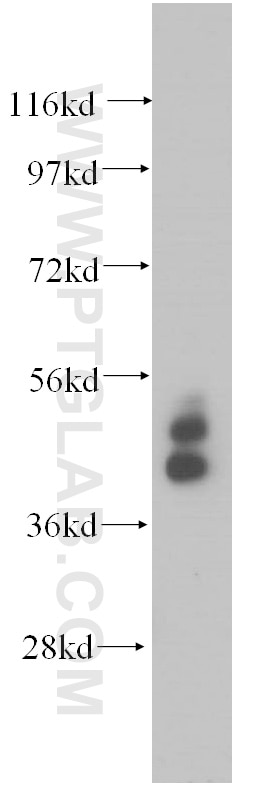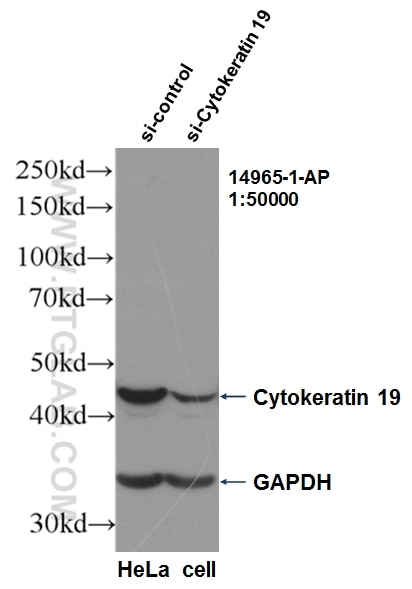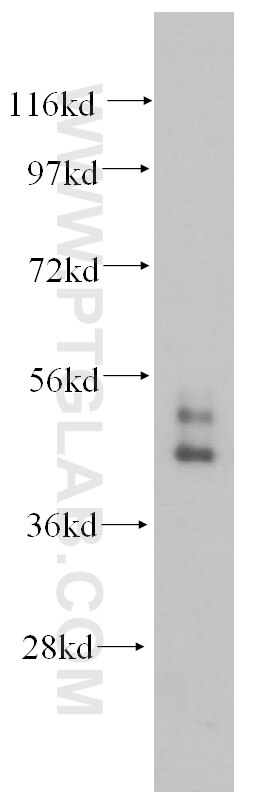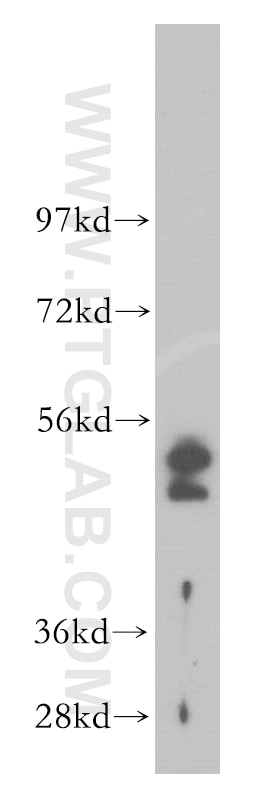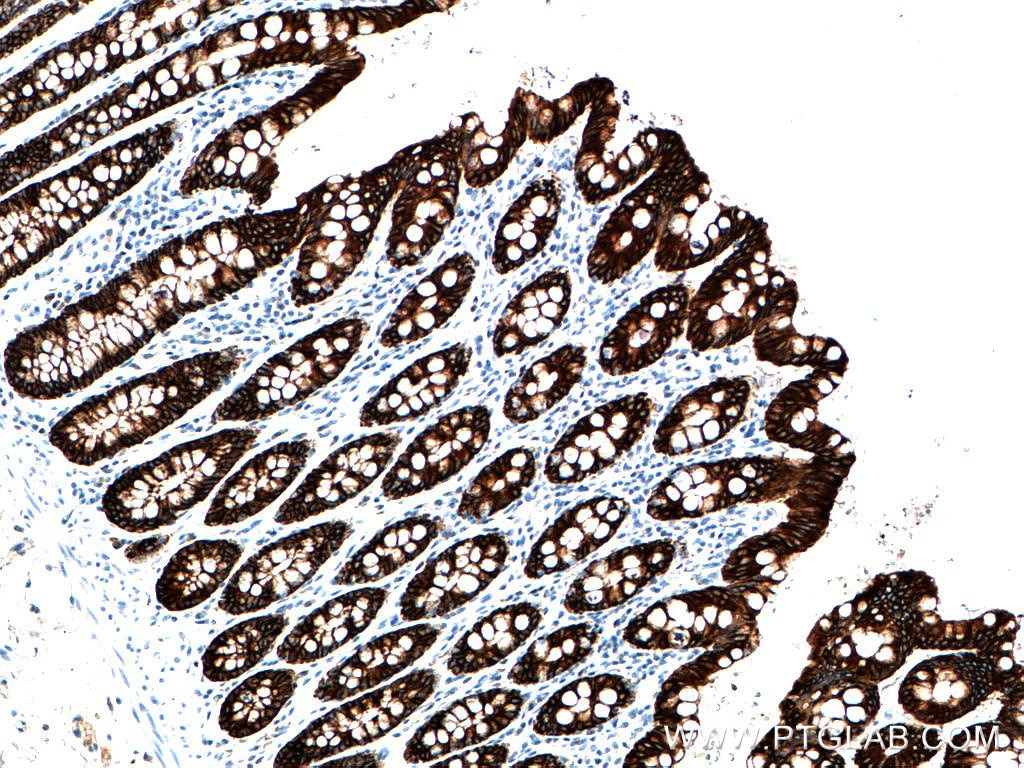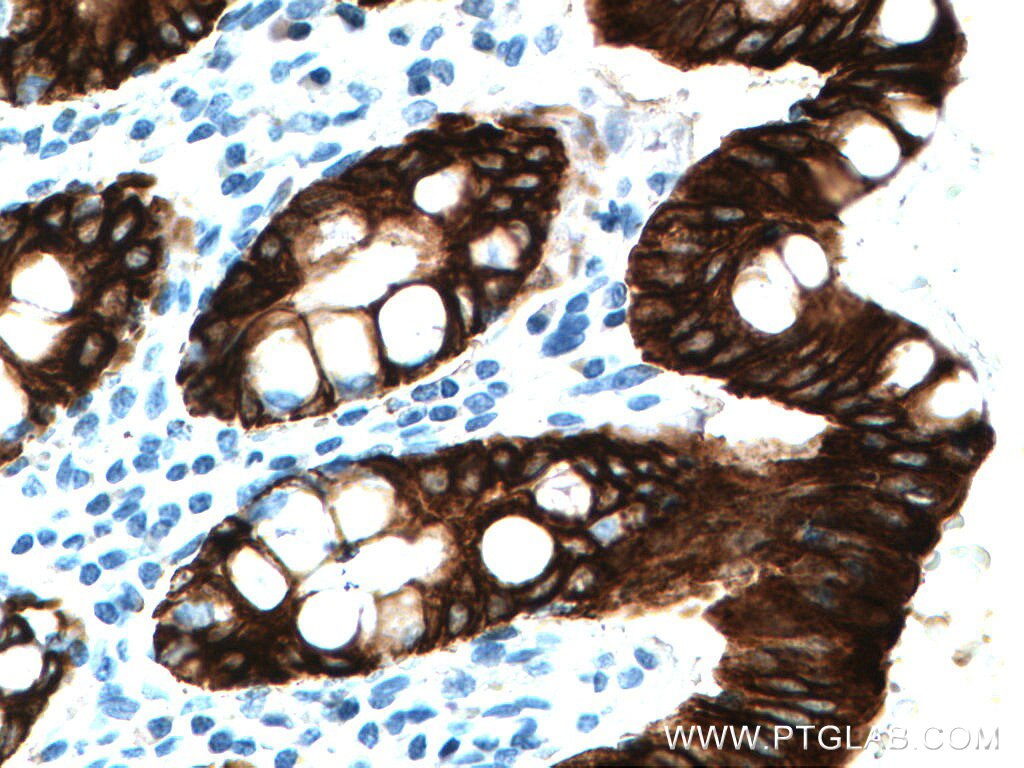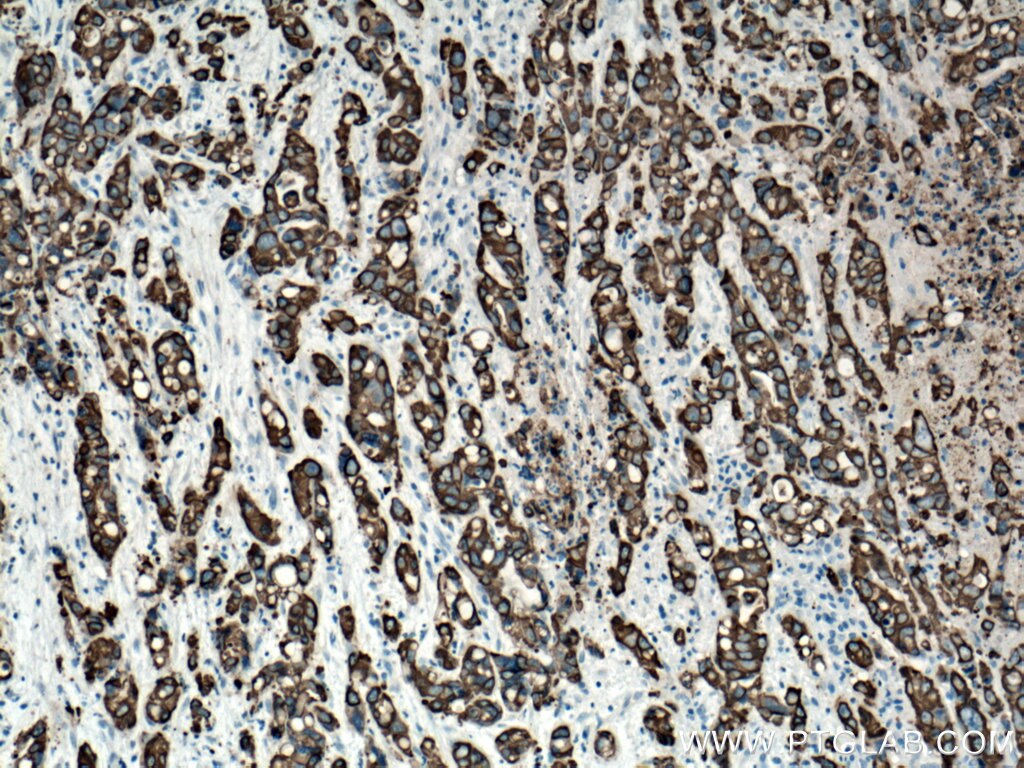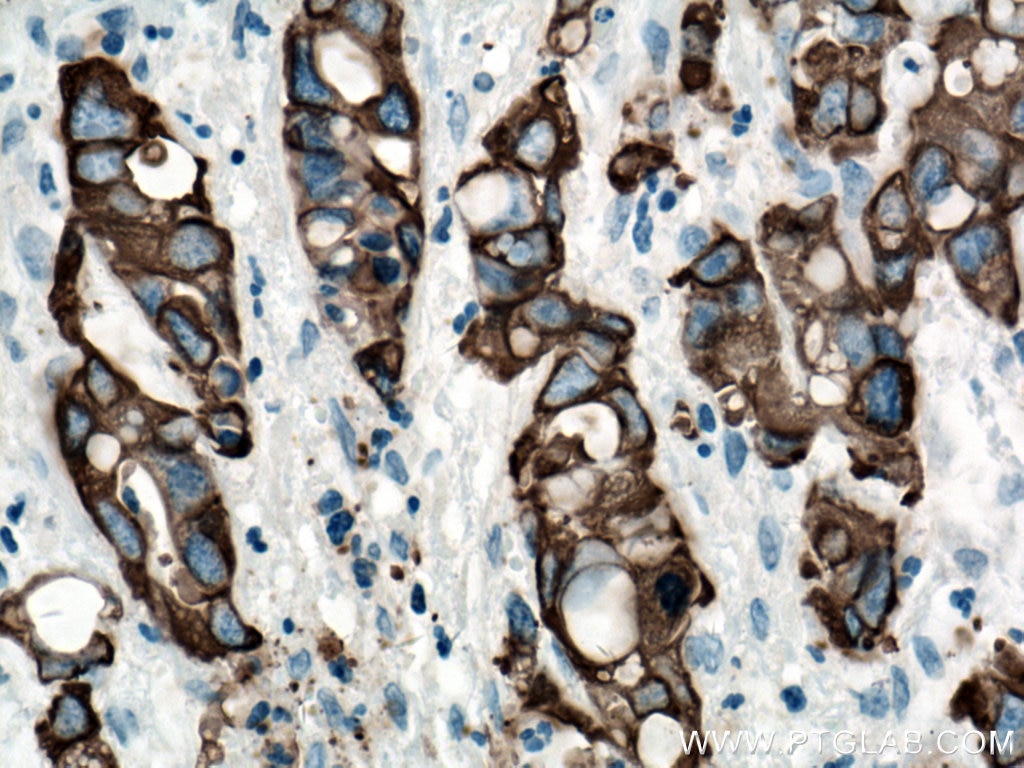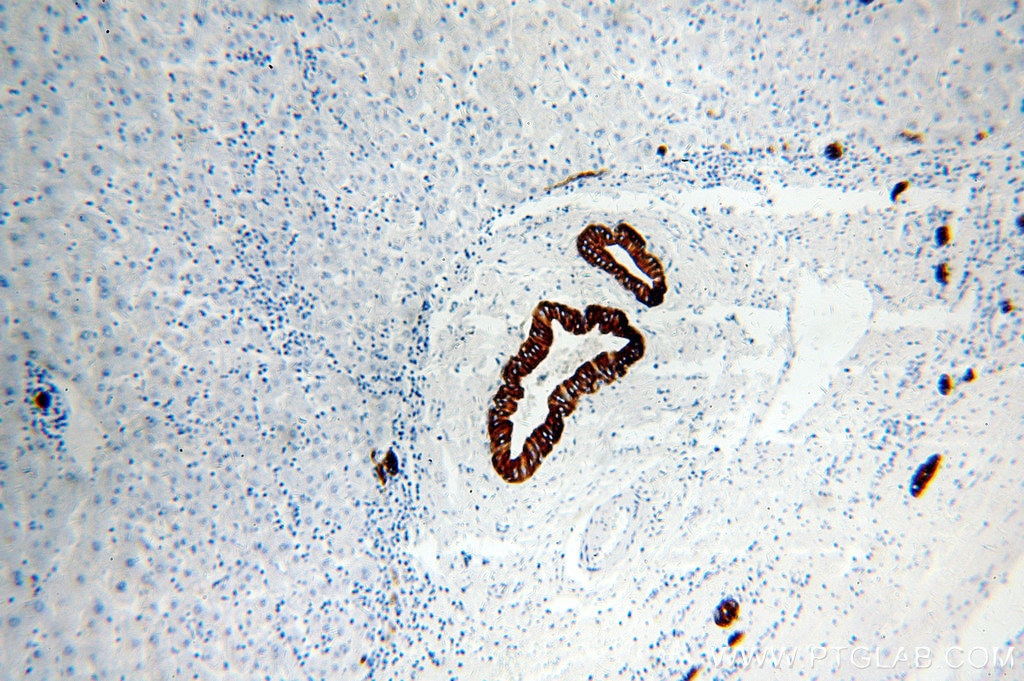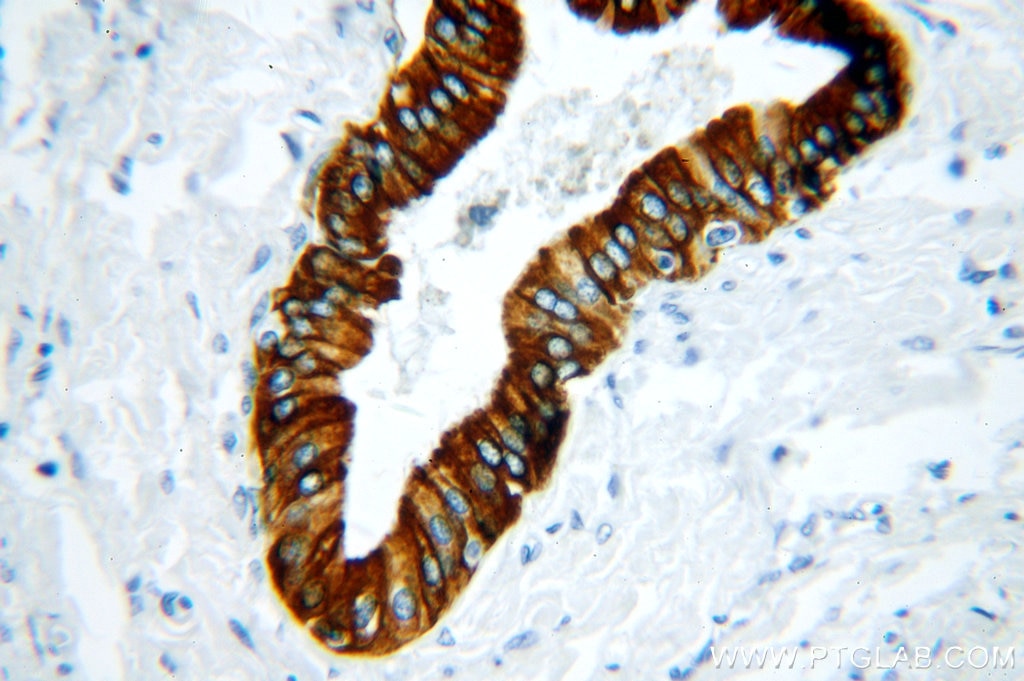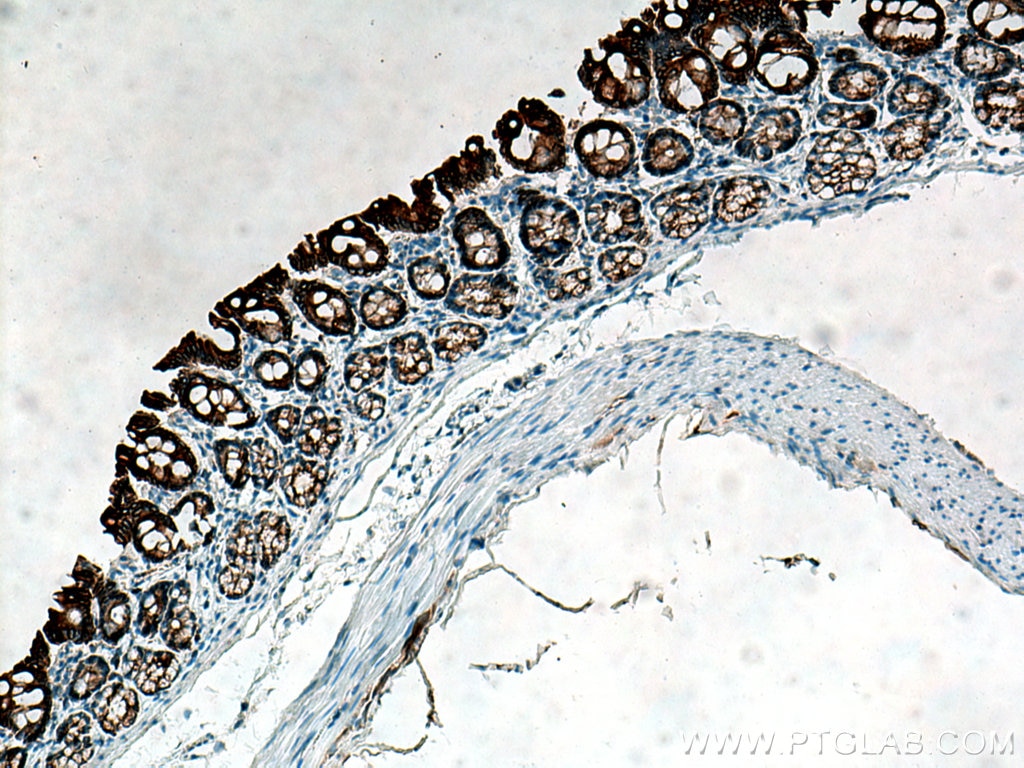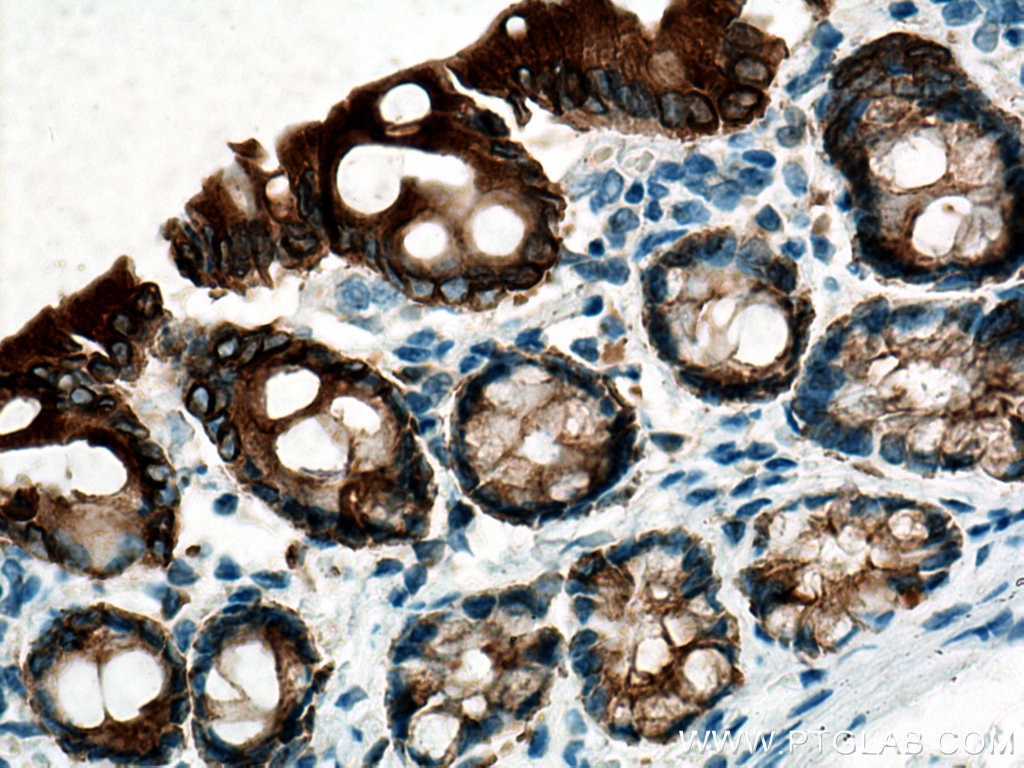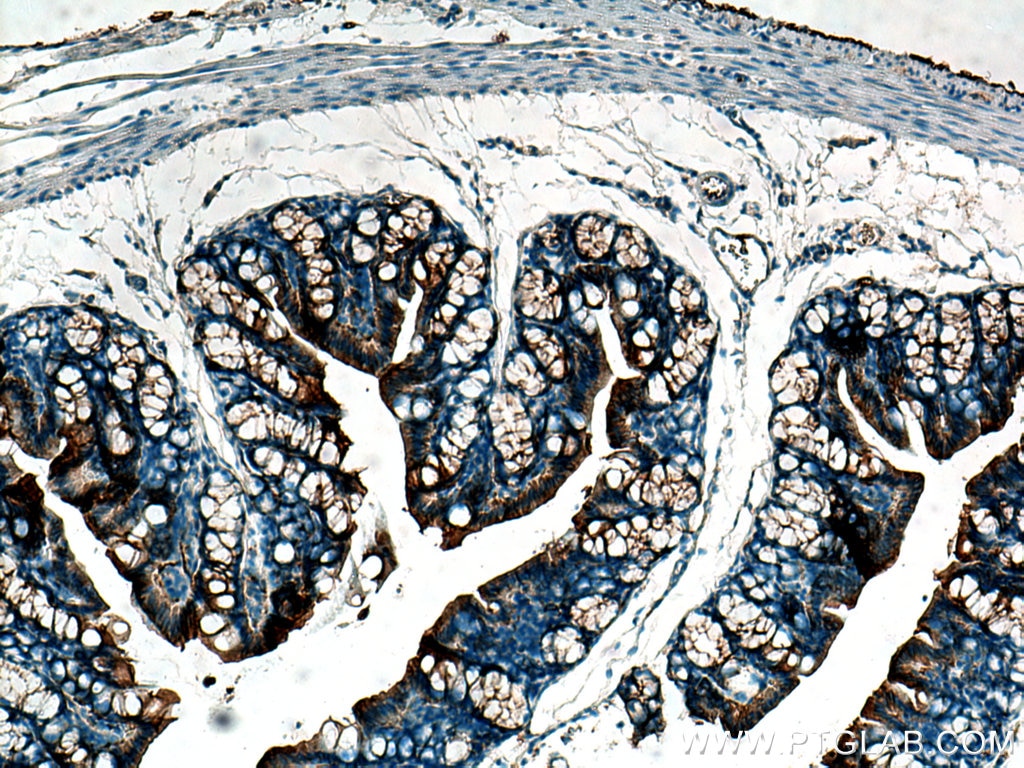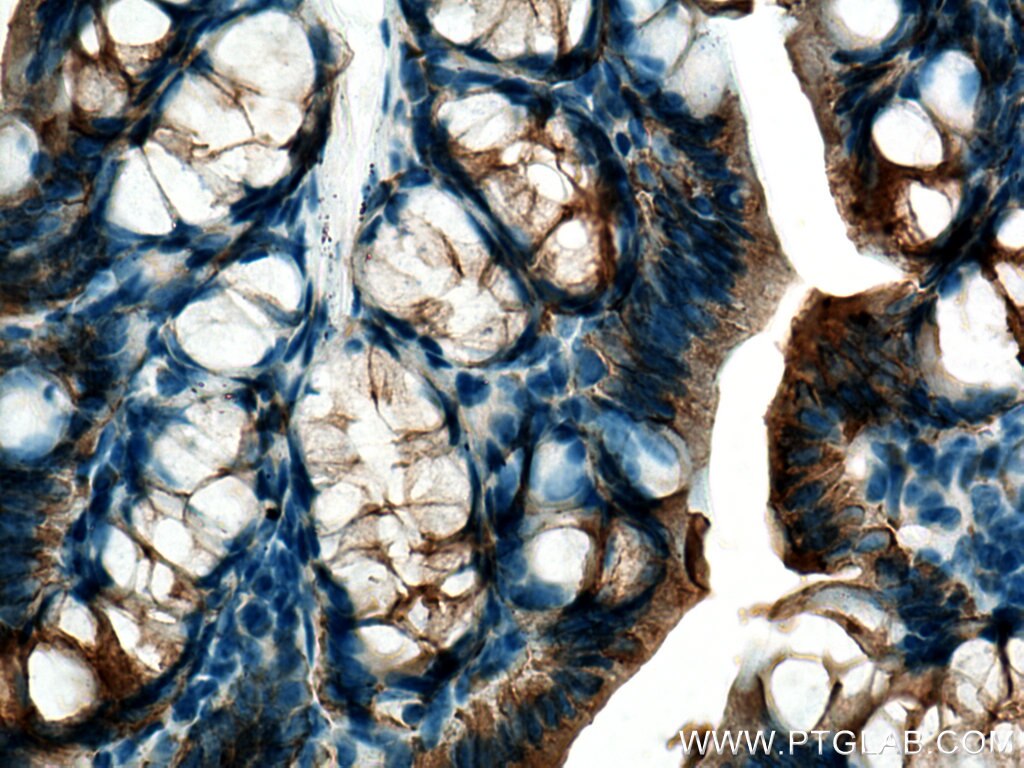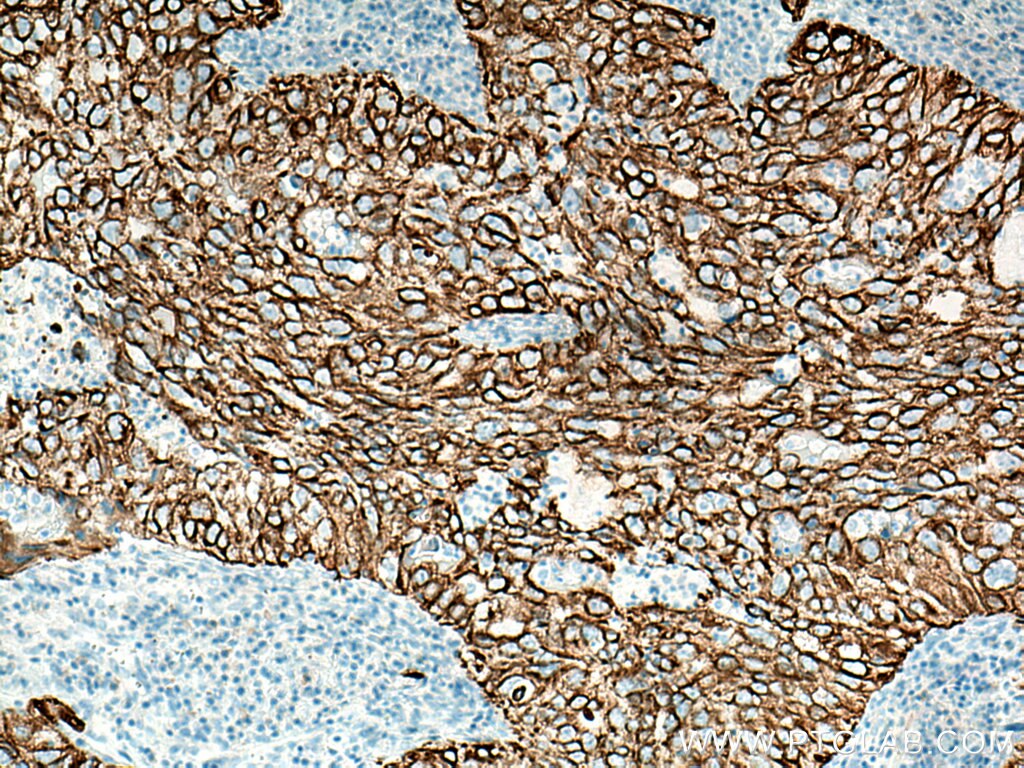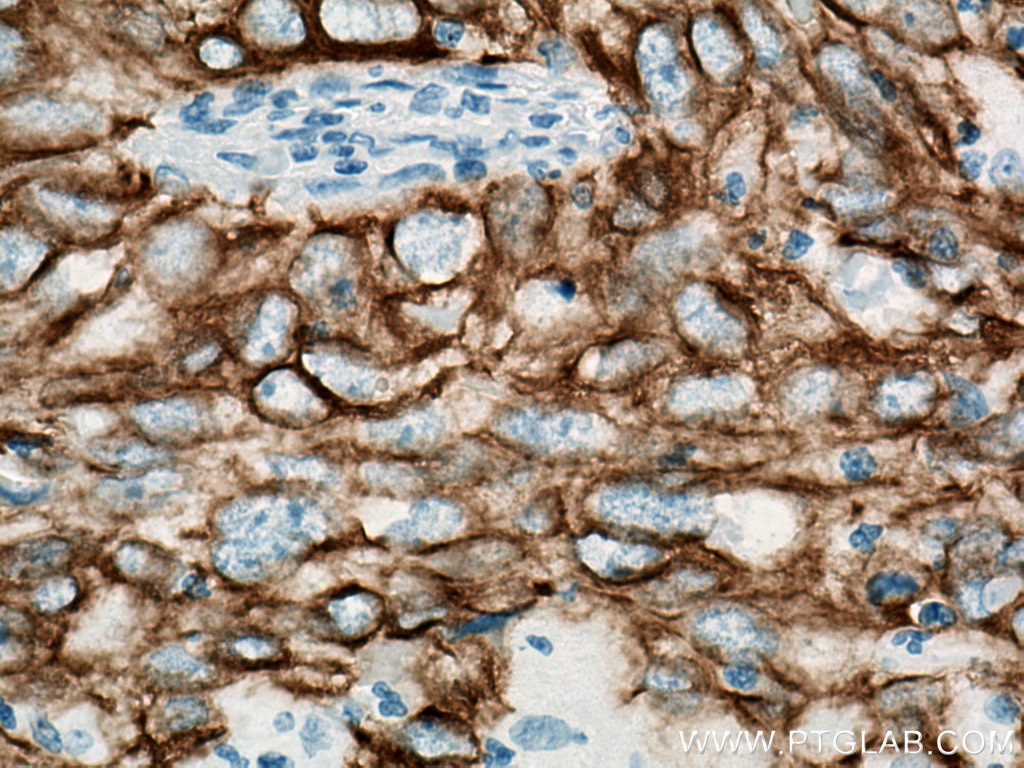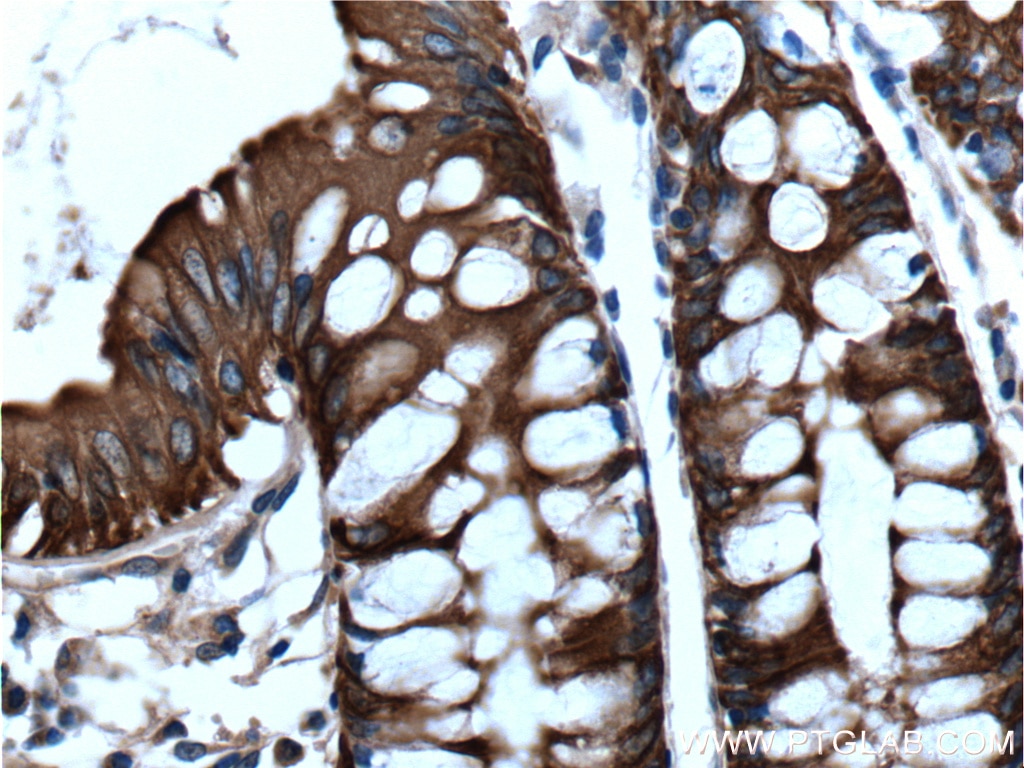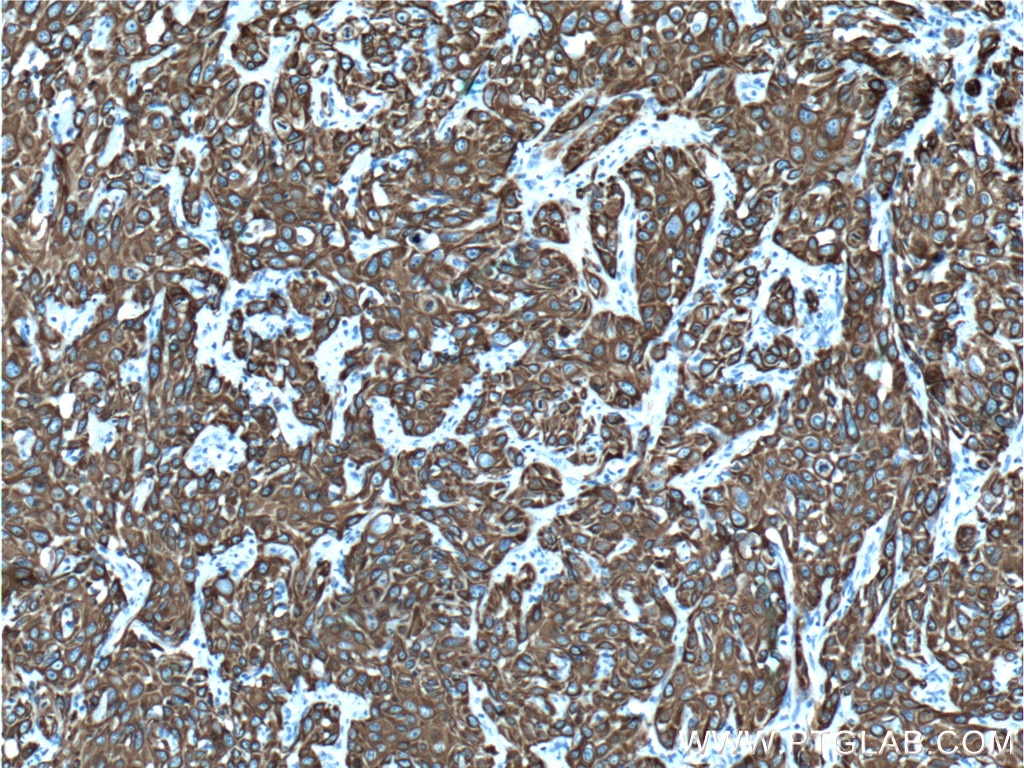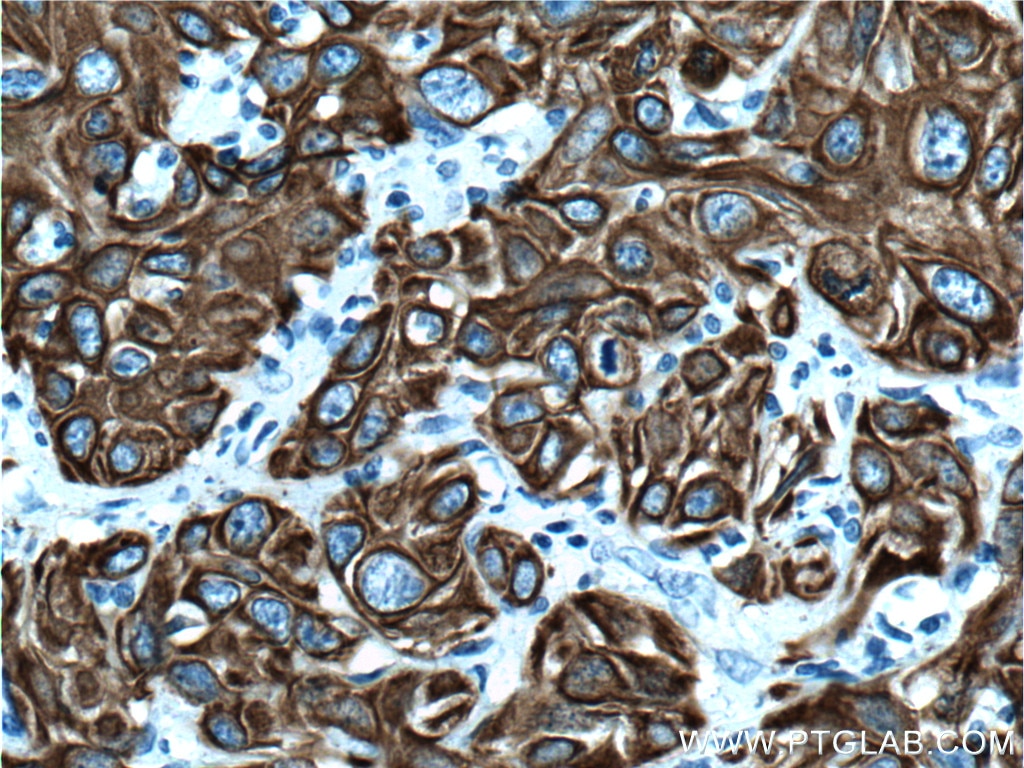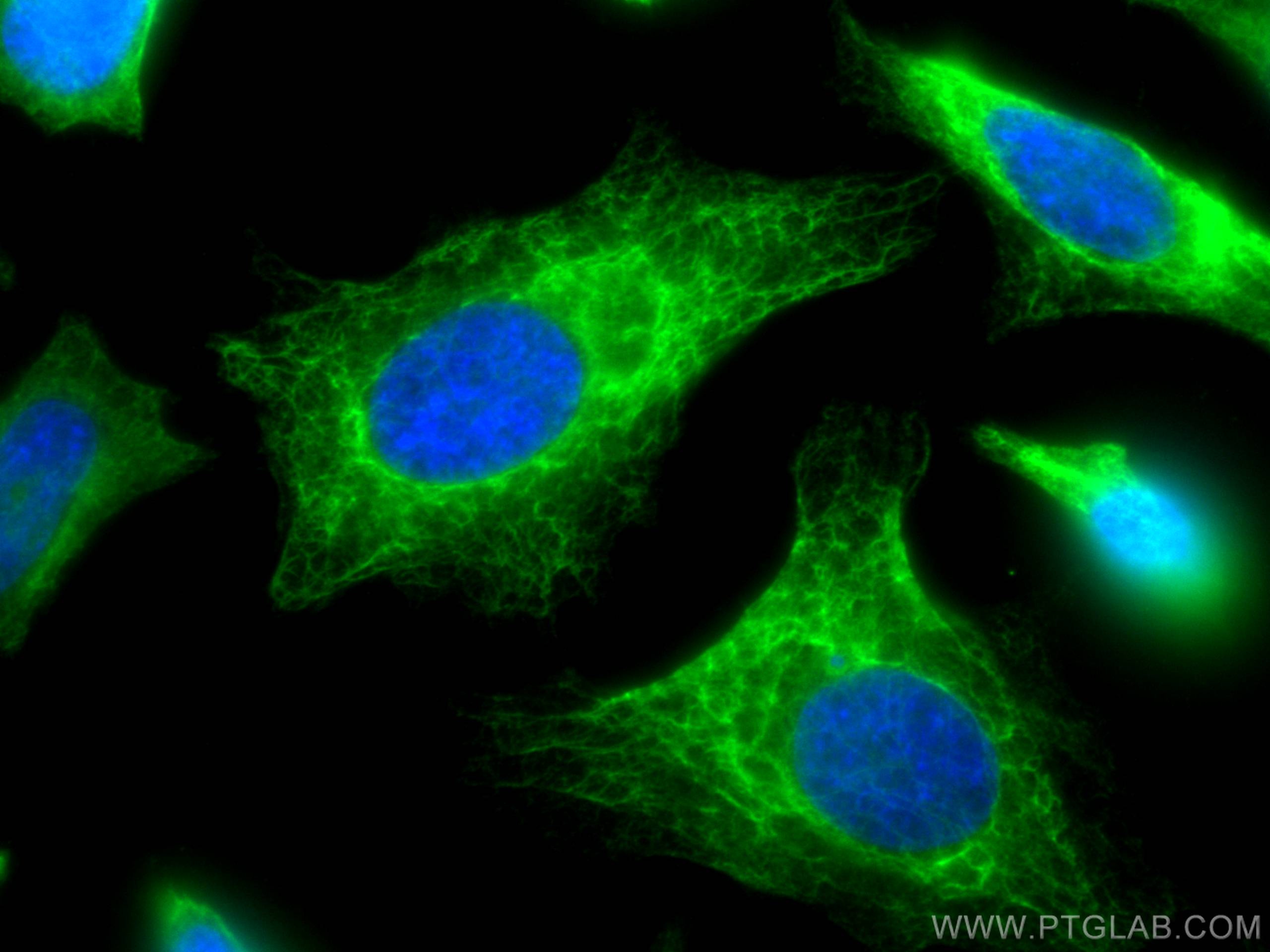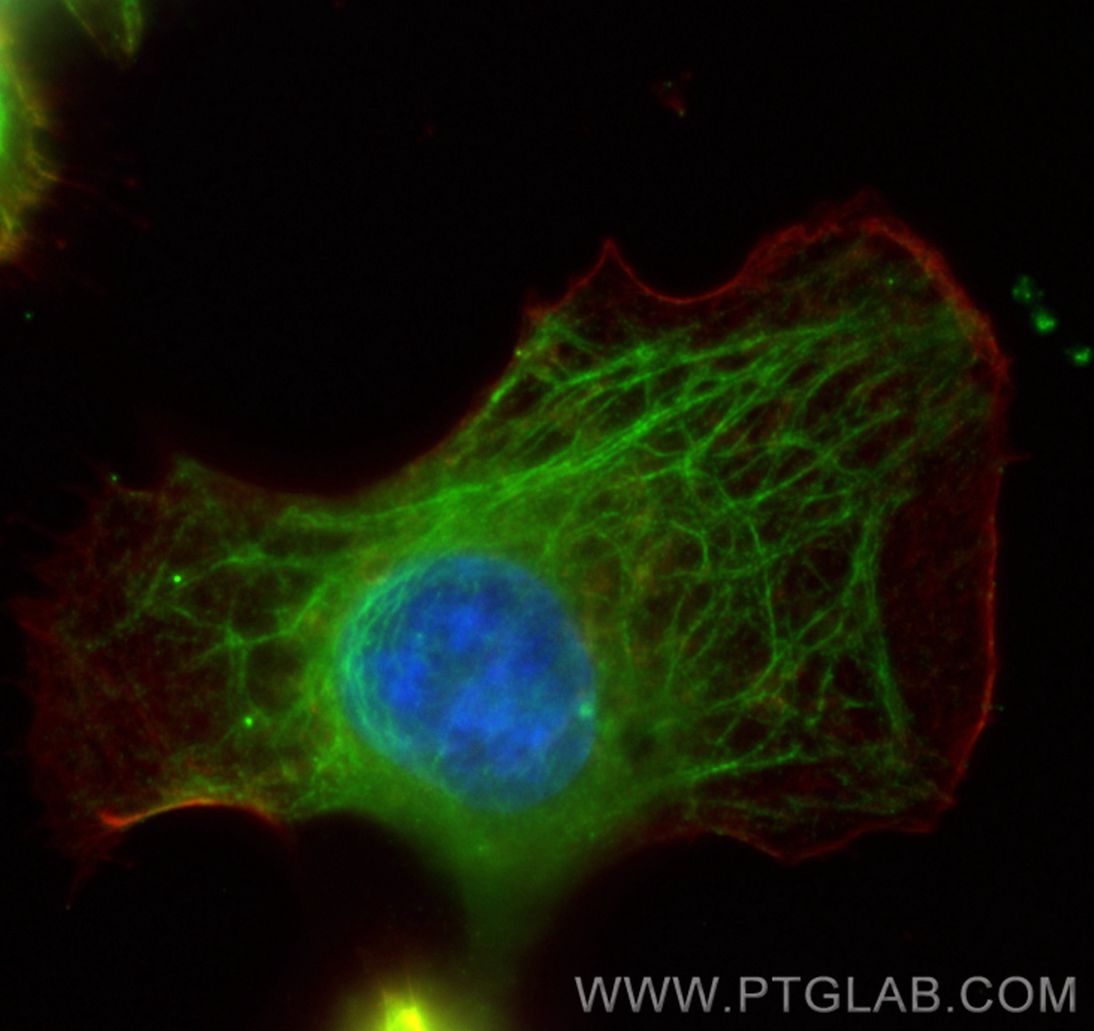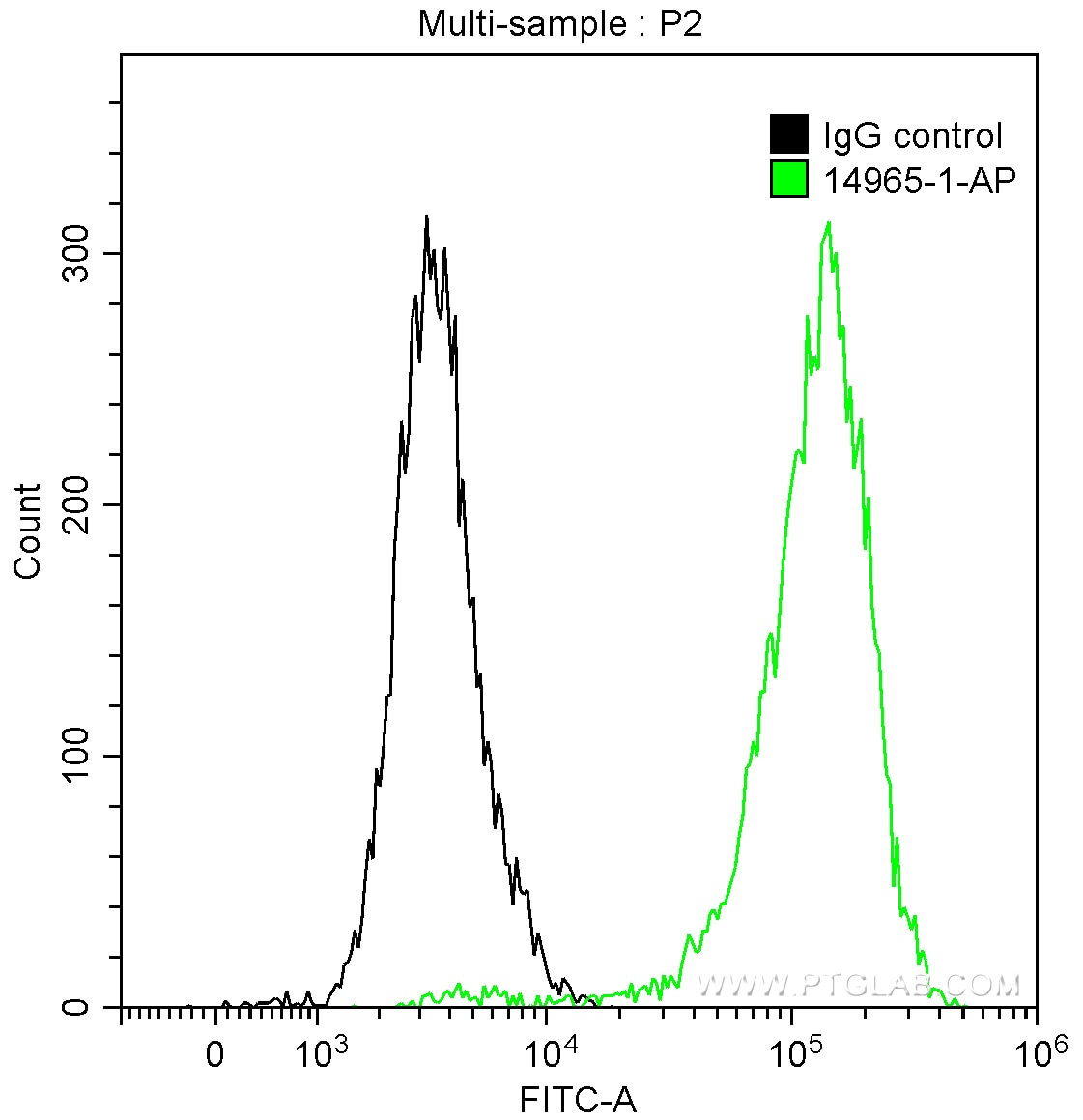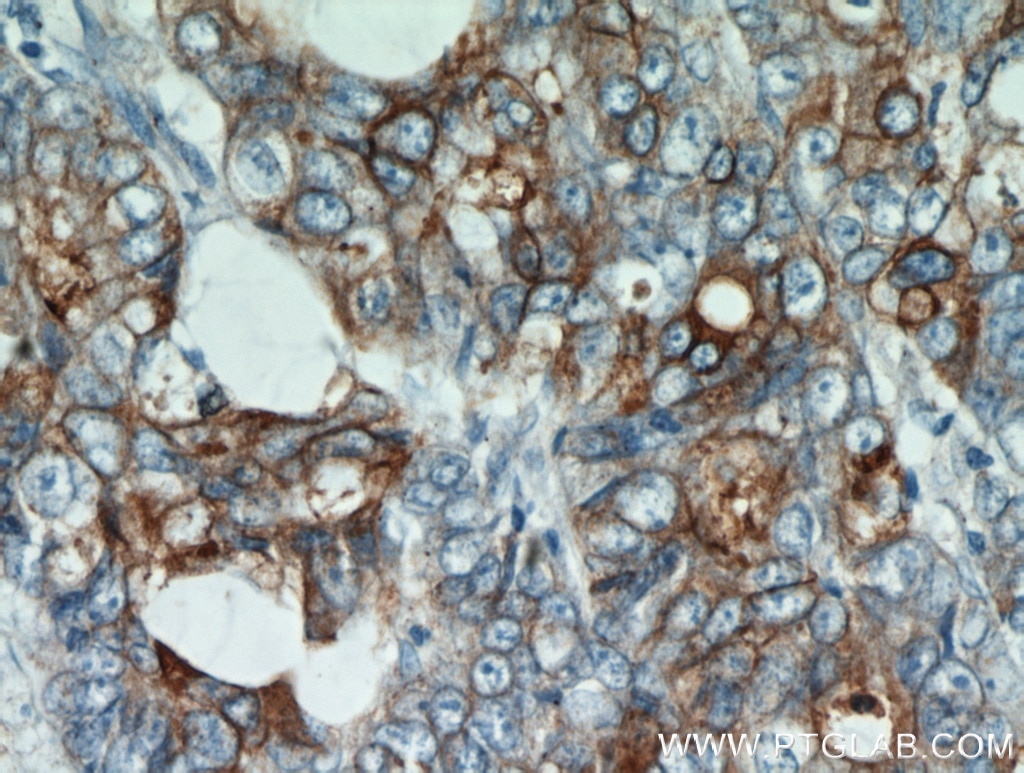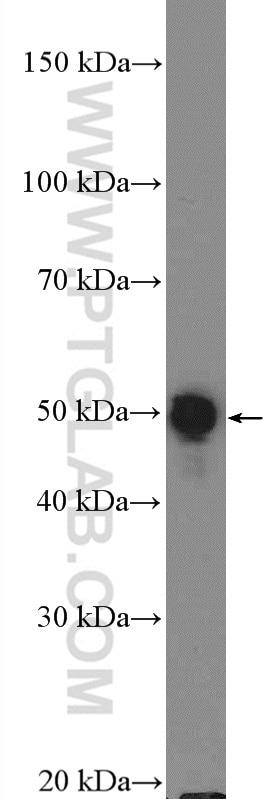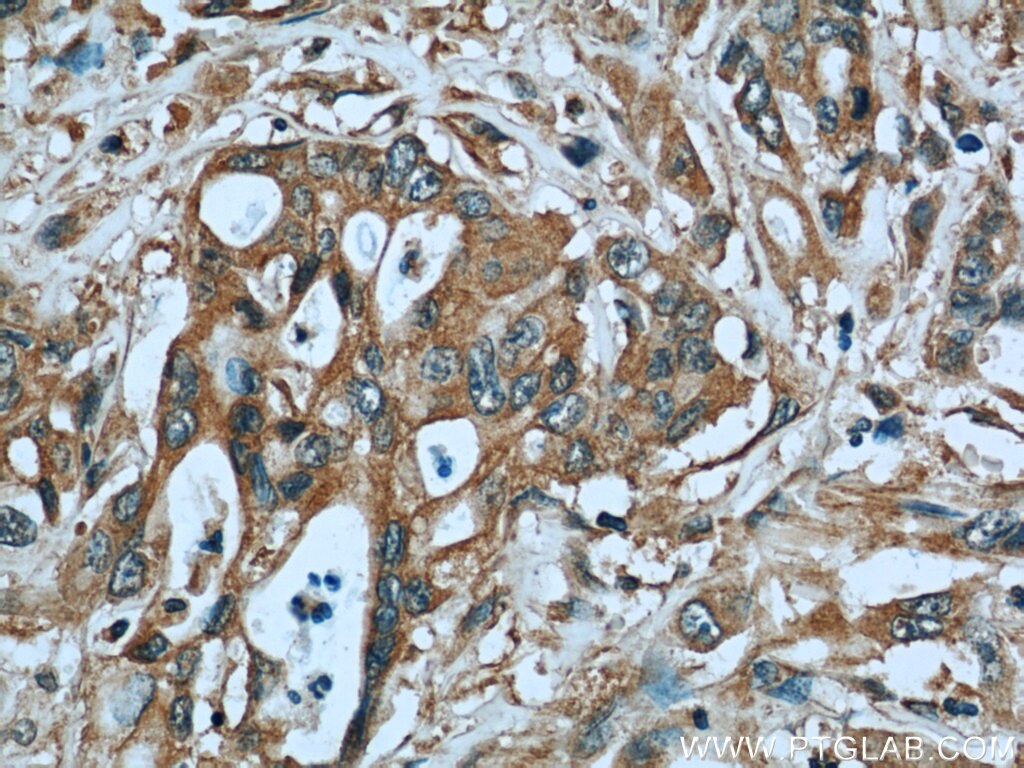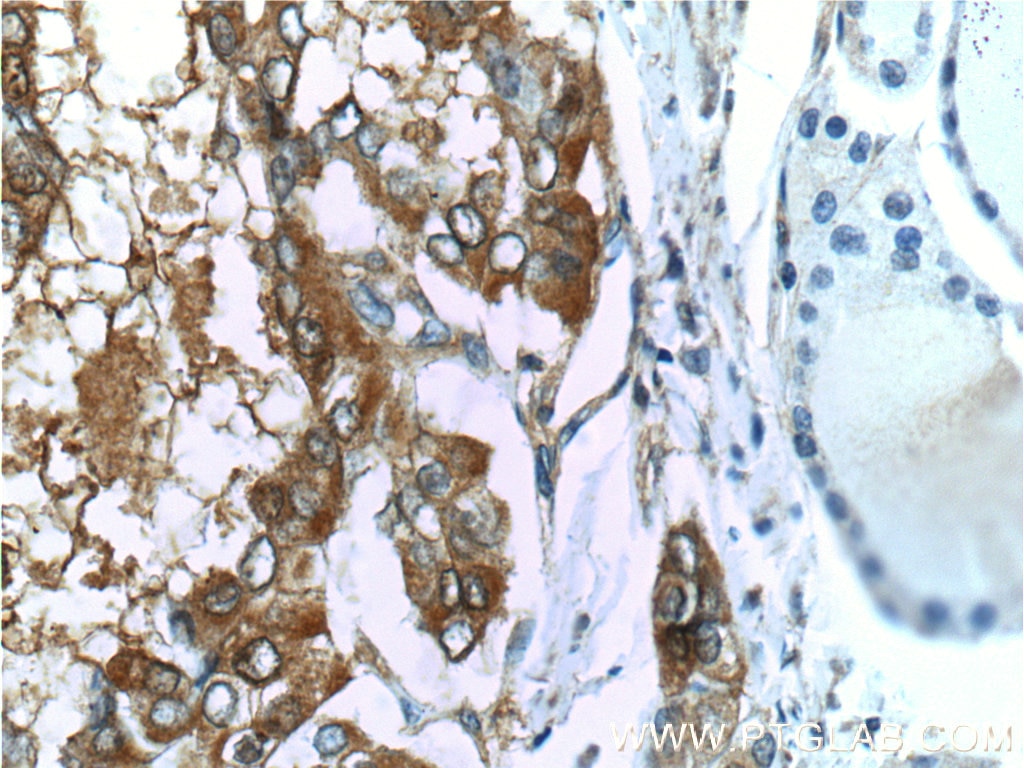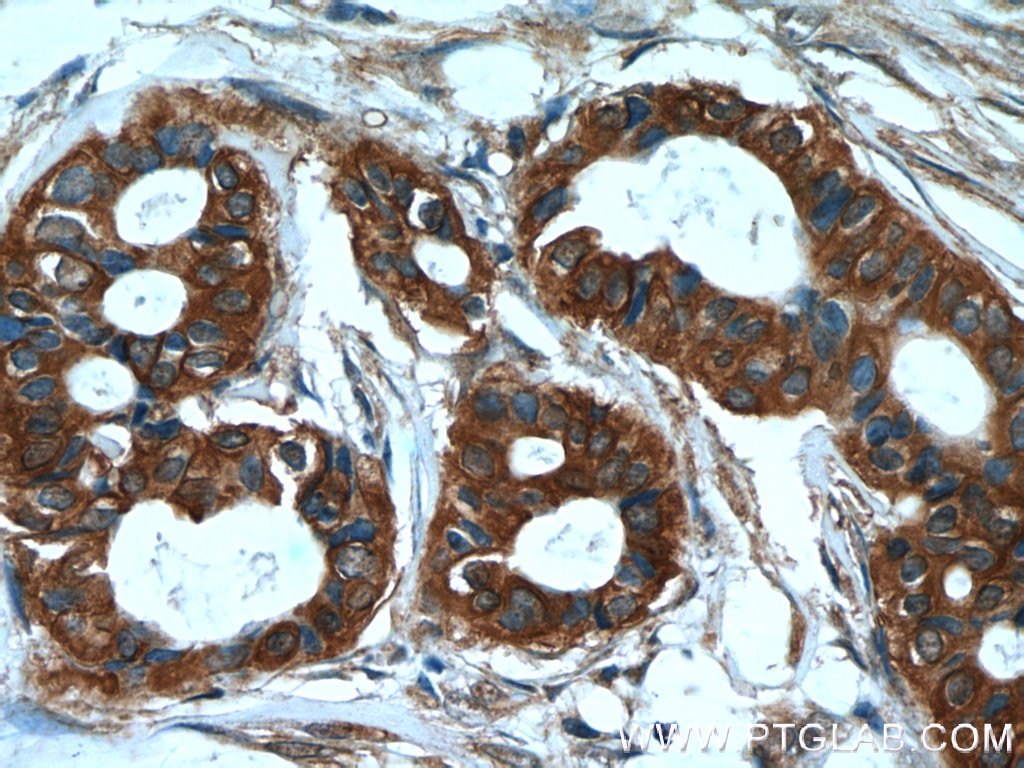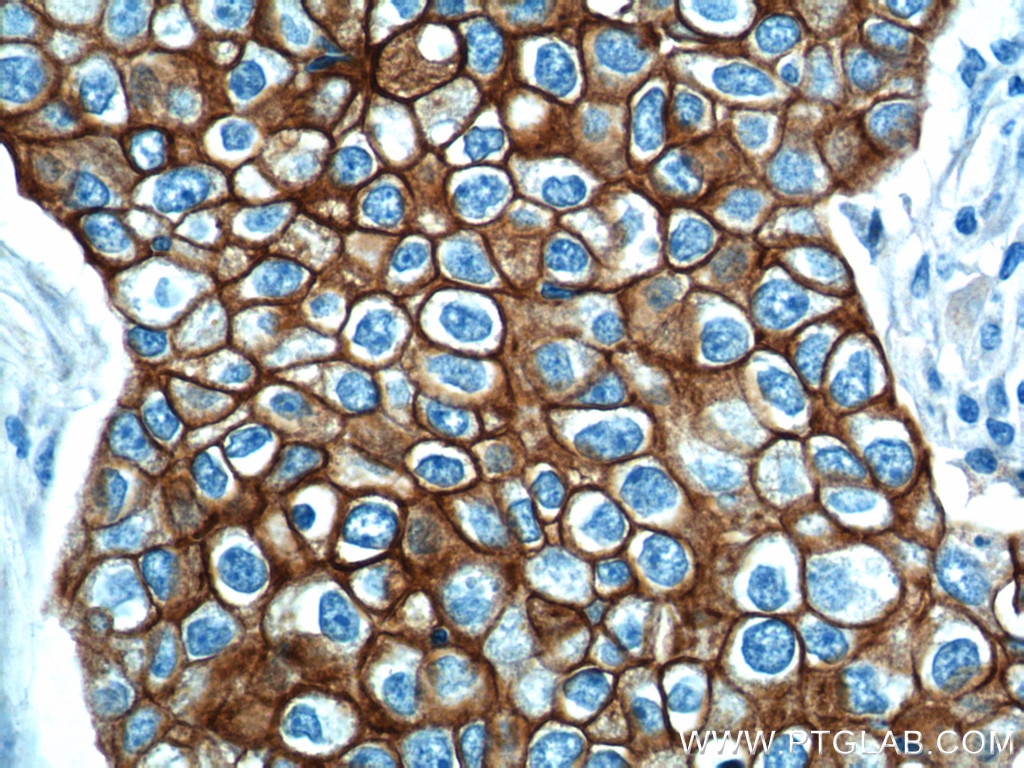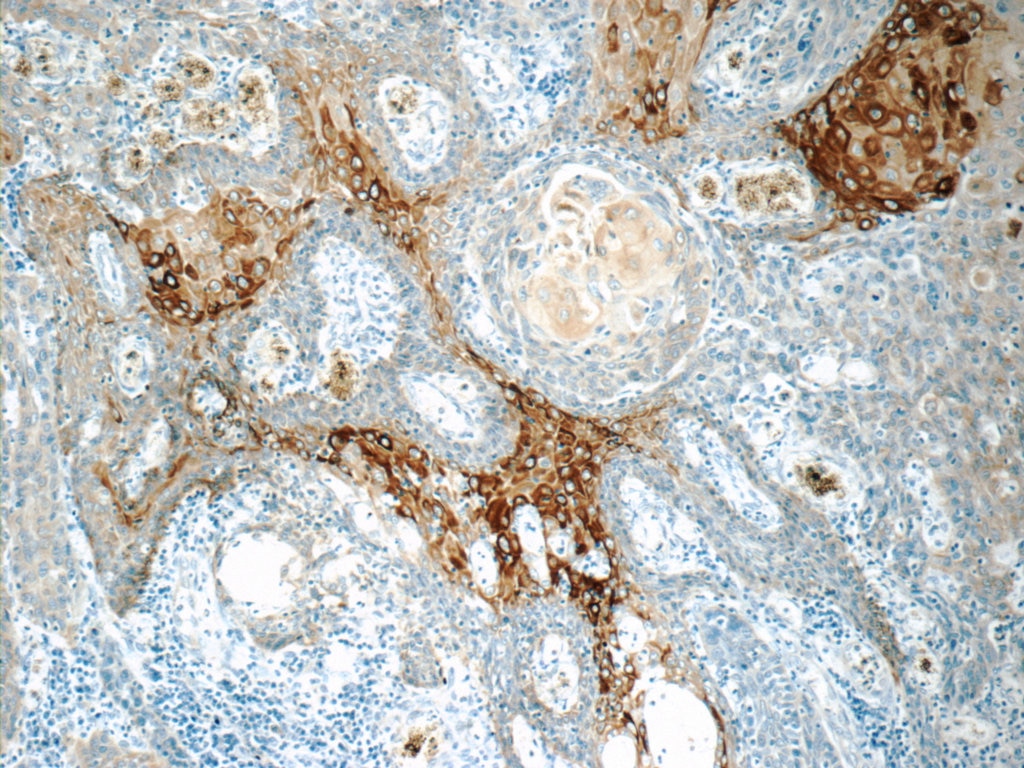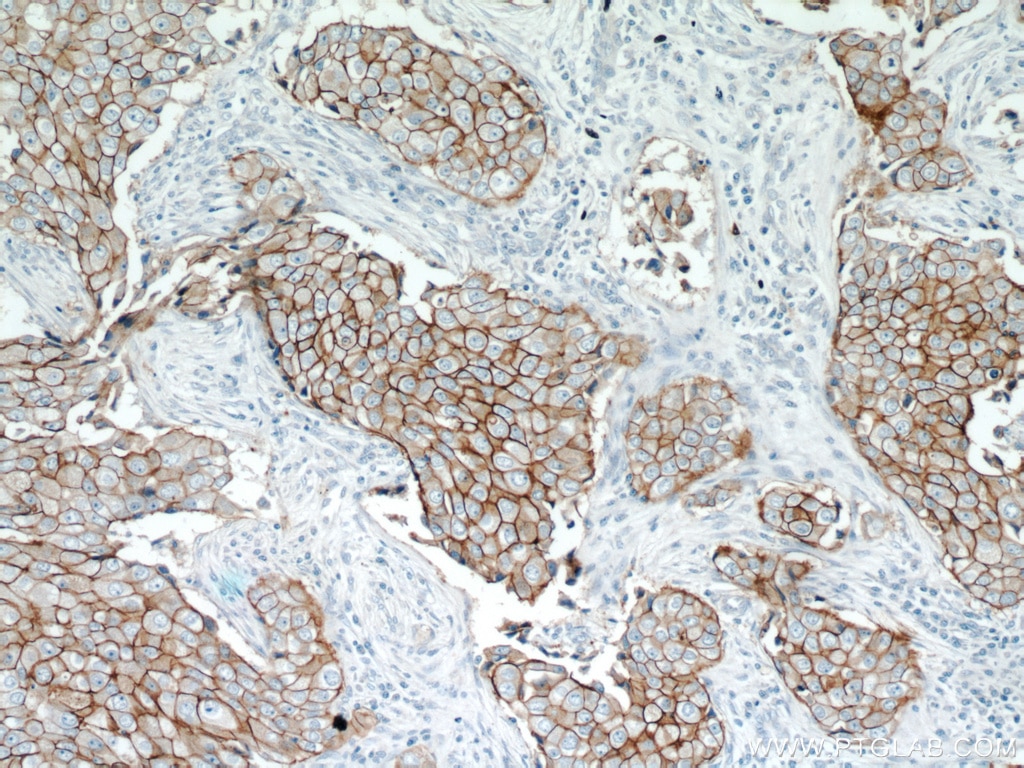- Featured Product
- KD/KO Validated
Cytokeratin 19 Polyklonaler Antikörper
Cytokeratin 19 Polyklonal Antikörper für FC, IF, IHC, WB, ELISA
Wirt / Isotyp
Kaninchen / IgG
Getestete Reaktivität
human, Maus, Ratte und mehr (1)
Anwendung
WB, IHC, IF, FC, ELISA
Konjugation
Unkonjugiert
Kat-Nr. : 14965-1-AP
Synonyme
Galerie der Validierungsdaten
Geprüfte Anwendungen
| Erfolgreiche Detektion in WB | MCF7 cells, BxPC-3-Zellen, HeLa-Zellen, HepG2-Zellen |
| Erfolgreiche Detektion in IHC | humanes Kolongewebe, humanes Leberkarzinomgewebe, humanes Lungenkarzinomgewebe, humanes Zervixkarzinomgewebe, Maus-Kolongewebe, Ratten-Kolongewebe Hinweis: Antigendemaskierung mit TE-Puffer pH 9,0 empfohlen. (*) Wahlweise kann die Antigendemaskierung auch mit Citratpuffer pH 6,0 erfolgen. |
| Erfolgreiche Detektion in IF | HeLa-Zellen, A431-Zellen |
| Erfolgreiche Detektion in FC | MCF-7-Zellen |
Empfohlene Verdünnung
| Anwendung | Verdünnung |
|---|---|
| Western Blot (WB) | WB : 1:500-1:3000 |
| Immunhistochemie (IHC) | IHC : 1:1000-1:6400 |
| Immunfluoreszenz (IF) | IF : 1:200-1:800 |
| Durchflusszytometrie (FC) | FC : 0.20 ug per 10^6 cells in a 100 µl suspension |
| It is recommended that this reagent should be titrated in each testing system to obtain optimal results. | |
| Sample-dependent, check data in validation data gallery | |
Veröffentlichte Anwendungen
| WB | See 2 publications below |
| IHC | See 5 publications below |
| IF | See 4 publications below |
Produktinformation
14965-1-AP bindet in WB, IHC, IF, FC, ELISA Cytokeratin 19 und zeigt Reaktivität mit human, Maus, Ratten
| Getestete Reaktivität | human, Maus, Ratte |
| In Publikationen genannte Reaktivität | human, Affe, Maus, Ratte |
| Wirt / Isotyp | Kaninchen / IgG |
| Klonalität | Polyklonal |
| Typ | Antikörper |
| Immunogen | Cytokeratin 19 fusion protein Ag6830 |
| Vollständiger Name | keratin 19 |
| Berechnetes Molekulargewicht | 44 kDa |
| Beobachtetes Molekulargewicht | 40 kDa, 46 kDa |
| GenBank-Zugangsnummer | BC002539 |
| Gene symbol | KRT19 |
| Gene ID (NCBI) | 3880 |
| Konjugation | Unkonjugiert |
| Form | Liquid |
| Reinigungsmethode | Antigen-Affinitätsreinigung |
| Lagerungspuffer | PBS mit 0.02% Natriumazid und 50% Glycerin pH 7.3. |
| Lagerungsbedingungen | Bei -20°C lagern. Nach dem Versand ein Jahr lang stabil Aliquotieren ist bei -20oC Lagerung nicht notwendig. 20ul Größen enthalten 0,1% BSA. |
Hintergrundinformationen
Keratins are a large family of proteins that form the intermediate filament cytoskeleton of epithelial cells, which are classified into two major sequence types. Type I keratins are a group of acidic intermediate filament proteins, including K9-K23, and the hair keratins Ha1-Ha8. Type II keratins are the basic or neutral courterparts to the acidic type I keratins, including K1-K8, and the hair keratins, Hb1-Hb6. KRT19, one of type I keratins, is specifically expressed in the periderm, the transiently superficial layer that envelopes the developing epidermis. Due to its high sensitivity, KRT19 is the most used marker for detection of tumor cells disseminated in lymph nodes, peripheral blood, and bone marrow of breast cancer patients. This antibody, generated against full length KRT19 protein, also recognizes KRT17, another type I keratin homologous to KRT19.
Protokolle
| Produktspezifische Protokolle | |
|---|---|
| WB protocol for Cytokeratin 19 antibody 14965-1-AP | Protokoll herunterladen |
| IHC protocol for Cytokeratin 19 antibody 14965-1-AP | Protokoll herunterladen |
| IF protocol for Cytokeratin 19 antibody 14965-1-AP | Protokoll herunterladen |
| FC protocol for Cytokeratin 19 antibody 14965-1-AP | Protokoll herunterladen |
| Standard-Protokolle | |
|---|---|
| Klicken Sie hier, um unsere Standardprotokolle anzuzeigen |
Publikationen
| Species | Application | Title |
|---|---|---|
Gastroenterology ECM1 Prevents Activation of Transforming Growth Factor β, Hepatic Stellate Cells, and Fibrogenesis in Mice. | ||
Cell Rep In Vivo Functional Platform Targeting Patient-Derived Xenografts Identifies WDR5-Myc Association as a Critical Determinant of Pancreatic Cancer. | ||
Arch Toxicol Galunisertib modifies the liver fibrotic composition in the Abcb4Ko mouse model. | ||
Front Cell Dev Biol Volumetric imaging reveals VEGF-C-dependent formation of hepatic lymph vessels in mice | ||
Biochim Biophys Acta Mol Basis Dis The zonula occludens protein family regulates the hepatic barrier system in the murine liver. |
